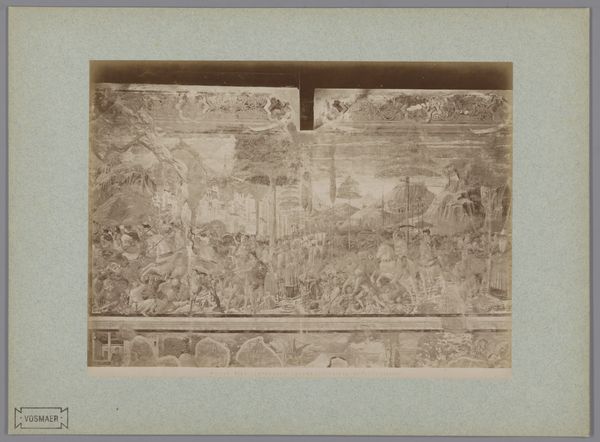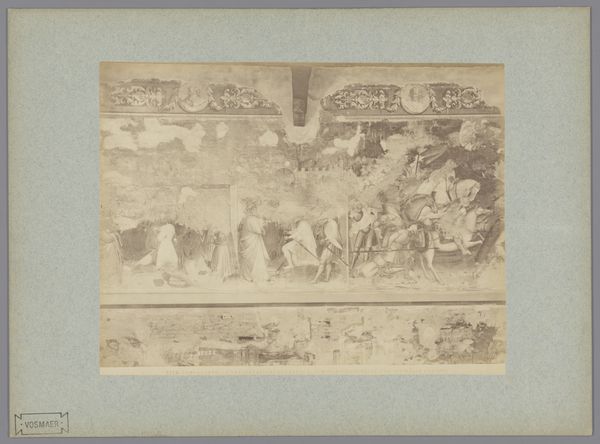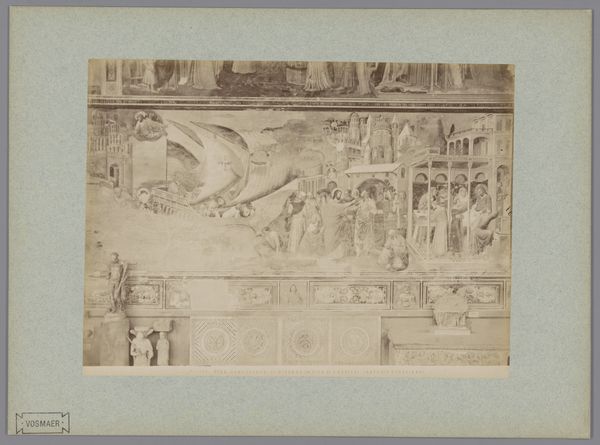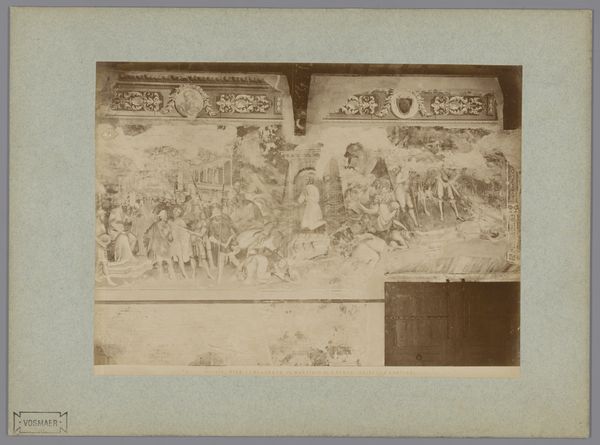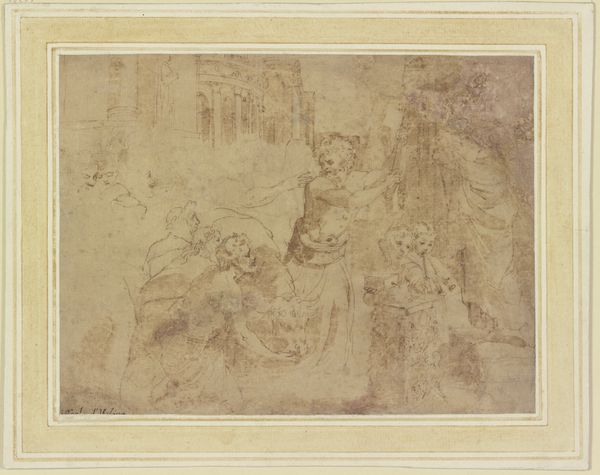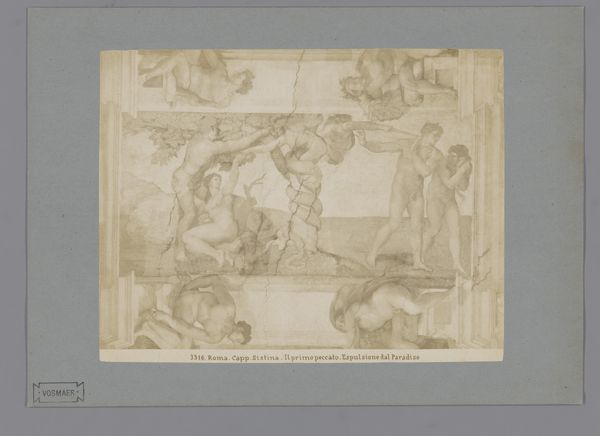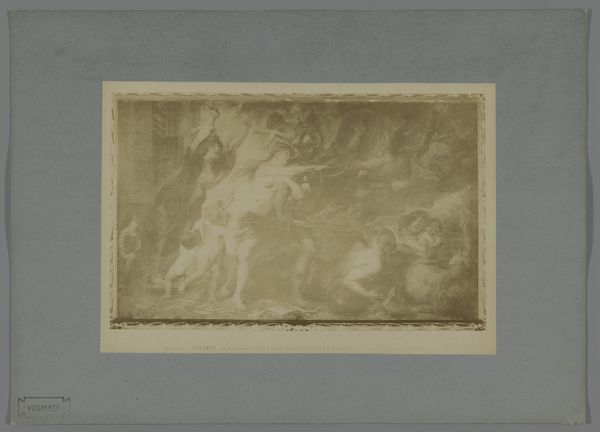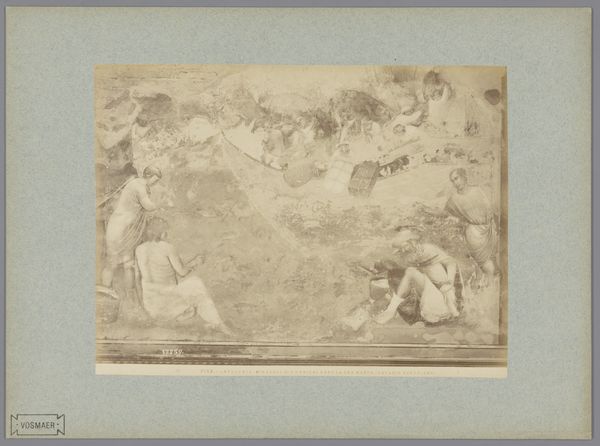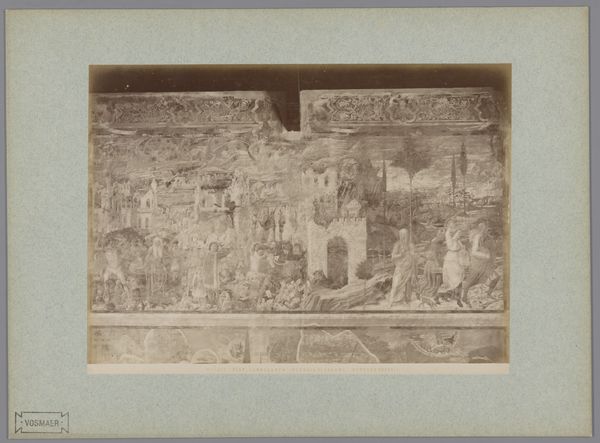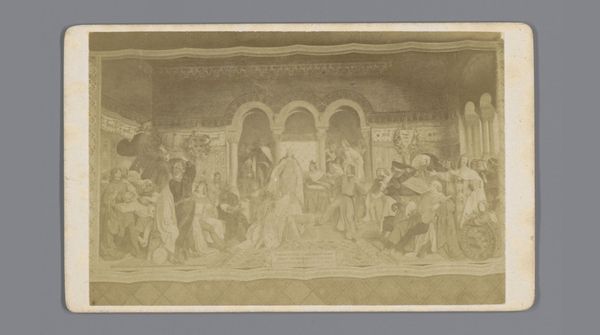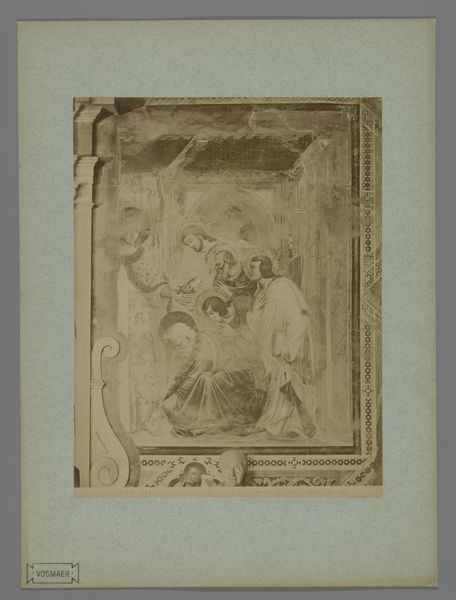
Fotoreproductie van het fresco De dood van Abel naar Piero di Puccio in het Camposanto te Pisa, Italië 1857 - 1900
0:00
0:00
print, fresco, photography, gelatin-silver-print
#
narrative-art
# print
#
landscape
#
fresco
#
photography
#
gelatin-silver-print
#
history-painting
#
italian-renaissance
Dimensions: height 190 mm, width 245 mm, height 260 mm, width 353 mm
Copyright: Rijks Museum: Open Domain
Curator: What we have here is a photographic reproduction, a gelatin silver print created sometime between 1857 and 1900 by Fratelli Alinari. The image documents a fresco, "The Death of Abel," by Piero di Puccio, located in the Camposanto in Pisa, Italy. Editor: The composition strikes me immediately; it has a kind of raw, immediate feel despite being a photographic reproduction of a much older fresco. The muted tones almost seem to emphasize the gravity of the depicted narrative. Curator: Exactly, consider how photography at the time provided wider audiences access to the fresco medium, historically bound to specific locations and architecture. These reproductions made art portable and reproducible in a novel way. Editor: Absolutely. It's also hard not to look at the subject matter. The murder of Abel by Cain—a foundational story. This rendition underscores humanity's long struggle with morality, kinship, and power. I wonder how Piero di Puccio understood its socio-political resonances within the Italian Renaissance, especially regarding questions of divine right and obedience. Curator: That’s an astute observation, but the availability of pigments for frescos in the early 14th century affected the ability to make vibrant colors and effects that one sees in paintings made with oils in later centuries. It might explain some of the muted color palettes. It also reflects the religious institutions being important patron during that time period Editor: Fair point. Yet, the medium's limitations perhaps contribute to the image's somber feel. The stark rendering intensifies the raw act of fratricide; how power imbalances play out in relationships. The camera, by capturing and disseminating this scene, opens conversations around violence, guilt, and reconciliation. Curator: The Alinari brothers were important commercial photographers based in Florence during the mid-19th century and onward. Their work gave Italian and international art scholars unprecedented access to primary art works, using a portable, reproducible, relatively inexpensive medium like photography. Editor: That's an interesting fact. It's this confluence of the art historical subject—its politics and symbolic language—intersecting with Alinari brothers and their contemporary cultural sphere that piques my interest most. Looking closer at who gained from these easily disseminated depictions would provide fruitful dialogue on social narratives around religion during the period. Curator: Definitely a way to approach understanding the intersections here! We've discussed material availability to content. The layering of artistic decisions reveals so much. Editor: Agreed, a powerful blend of art history and social commentary! It definitely adds layers to interpreting an established subject matter.
Comments
No comments
Be the first to comment and join the conversation on the ultimate creative platform.
